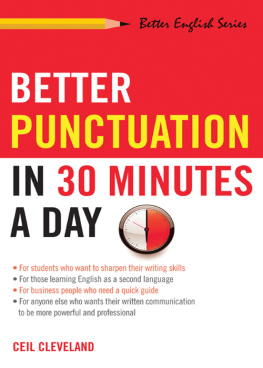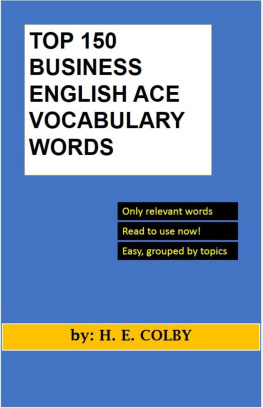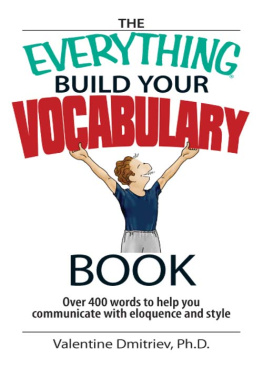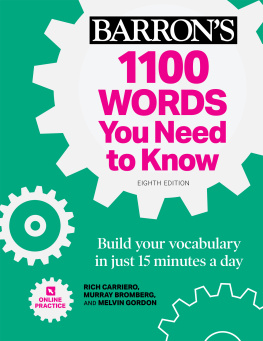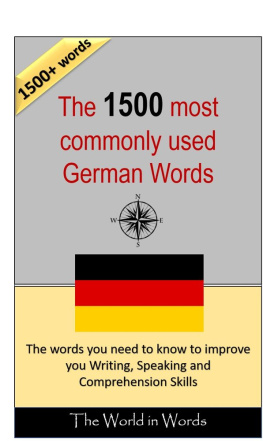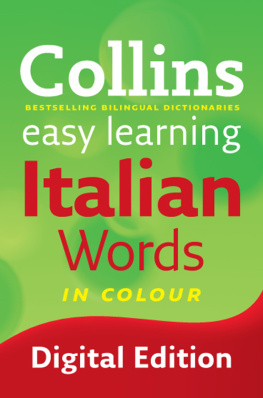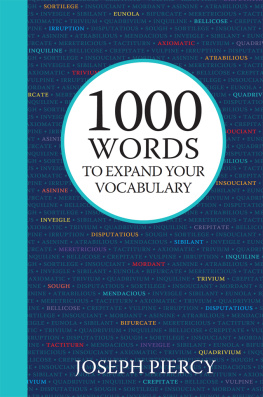Copyright 2005 by Ceil Cleveland. All rights reserved. Except as permitted under the United States Copyright Act of 1976, no part of this publication may be reproduced or distributed in any form or by any means, or stored in a data base or retrieval system, without the prior written permission of the publisher.
ISBN: 978-0-07-185046-9
MHID: 0-07-185046-5
The material in this eBook also appears in the print version of this title: ISBN: 978-0-07-144325-8, MHID: 0-07-144325-8.
eBook conversion by codeMantra
Version 1.0
All trademarks are trademarks of their respective owners. Rather than put a trademark symbol after every occurrence of a trademarked name, we use names in an editorial fashion only, and to the benefit of the trademark owner, with no intention of infringement of the trademark. Where such designations appear in this book, they have been printed with initial caps.
McGraw-Hill Education eBooks are available at special quantity discounts to use as premiums and sales promotions or for use in corporate training programs. To contact a representative, please visit the Contact Us page at www.mhprofessional.com.
TERMS OF USE
This is a copyrighted work and McGraw-Hill Education and its licensors reserve all rights in and to the work. Use of this work is subject to these terms. Except as permitted under the Copyright Act of 1976 and the right to store and retrieve one copy of the work, you may not decompile, disassemble, reverse engineer, reproduce, modify, create derivative works based upon, transmit, distribute, disseminate, sell, publish or sublicense the work or any part of it without McGraw-Hill Educations prior consent. You may use the work for your own noncommercial and personal use; any other use of the work is strictly prohibited. Your right to use the work may be terminated if you fail to comply with these terms.
THE WORK IS PROVIDED AS IS. MCGRAW-HILL EDUCATION AND ITS LICENSORS MAKE NO GUARANTEES OR WARRANTIES AS TO THE ACCURACY, ADEQUACY OR COMPLETENESS OF OR RESULTS TO BE OBTAINED FROM USING THE WORK, INCLUDING ANY INFORMATION THAT CAN BE ACCESSED THROUGH THE WORK VIA HYPERLINK OR OTHERWISE, AND EXPRESSLY DISCLAIM ANY WARRANTY, EXPRESS OR IMPLIED, INCLUDING BUT NOT LIMITED TO IMPLIED WARRANTIES OF MERCHANTABILITY OR FITNESS FOR A PARTICULAR PURPOSE. McGraw-Hill Education and its licensors do not warrant or guarantee that the functions contained in the work will meet your requirements or that its operation will be uninterrupted or error free. Neither McGraw-Hill Education nor its licensors shall be liable to you or anyone else for any inaccuracy, error or omission, regardless of cause, in the work or for any damages resulting therefrom. McGraw-Hill Education has no responsibility for the content of any information accessed through the work. Under no circumstances shall McGraw-Hill Education and/or its licensors be liable for any indirect, incidental, special, punitive, consequential or similar damages that result from the use of or inability to use the work, even if any of them has been advised of the possibility of such damages. This limitation of liability shall apply to any claim or cause whatsoever whether such claim or cause arises in contract, tort or otherwise.
For Jerry, whose words kept me going
Words are too awful an instrument
for good and evil to be trifled with;
they hold above all other external powers
a dominion over thoughts.
WILLIAM WORDSWORTH
Contents
Introduction
Reaching for a word? Find it here. Get smart with 28 new words a week.
Do you often suffer from lethologica(1)? Do you have that desired word right on the tip of your tongue, and yet it escapes you? Do not fulminate(2), develop alopecia(3), or defenestrate(4) your desk and chair! This book can deliver anabiosis(5) without emergency room treatment. An hour and three-quarters a week of brain exercises will get you in shape.
Through the introduction of new wordsusing heuristic(6) methods, paranomasia(7), and mnemonic(8) devices, well make you a lexical(9) genius in no time. You will be able to talk to anyone about any subject without embarrassment.
Equivocate(10) no more! Use precise language to sound smarter, work smarter, get smarter.
This book offers 28 new words (at least) in each of 52 chapters. Here you will see words defined and used in context, and will learn a bit about their backgrounds.
Early chapters () are arranged thematically in areas of the liberal arts and related subjects, which will give you the verbal tools and concepts in a historical context to read, view, listen to, write about, and discuss works in these areas with confidence.
In the early chapters of in chapters like Cool Words, Hot Words, or Not Words, for example) you will learn when and when not to use certain words. In the same part, in Trick Words and Slick Words, you will find how to use words that often confuse and trip up readers, writers, and speakers.
And in the later chapters of ), you will find some words whose definitions will surprise you and make you smile. English words are often wacky and fun: Wedbedrip, anyone? Quakebuttock?
These useful words will stretch you and increase your vocabulary. You will refine your knowledge of language and become confident in your use of words in a clear, precise, sophisticated manner. Learn and enjoy. Take it from an expert: English is a precise languageand sometimes goofy!
At the end of most chapters, you will find further information about words, clichs, and idioms, and some derivations and startling details about our language.
Do the exercises included here and enjoy the paronomasia. Here are the meanings of the ten words we offered you as a starter at the beginning of this introduction.
1. The inability to recall the right word
2. Explode with sudden violence
3. Lose hair and become bald
4. Toss out through a window
5. Bring to life again after a state of suspended animation
6. Learning through discovery
7. Word play, puns, and games
8. Aids to memory
9. One who knows vocabulary and language
10. To hedge or be deliberately ambiguous
Ceil Cleveland, New York, 2004
PART I
Essential Words for the Literate Person
Week Words for Discussing Art

week 1 / day
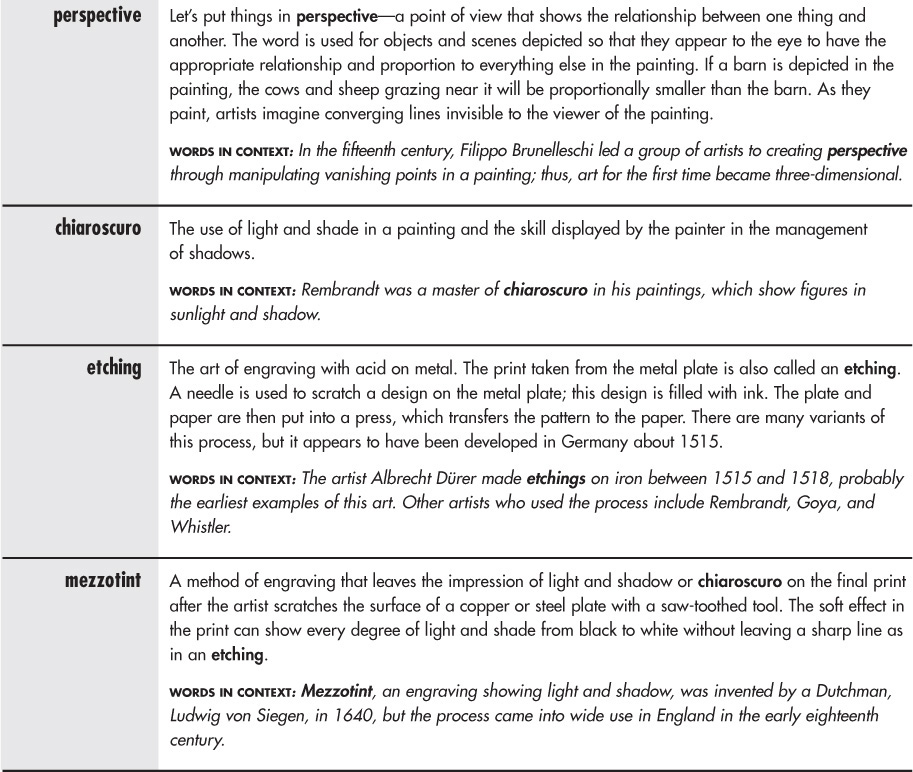
After studying the definitions above, use these new words in the sentences below.
1. The most popular work of Albrecht Drer was a(n)__________________of a pair of hands, palms held together in prayer.
2. Art lovers visit the Rijksmuseum in Amsterdam to see Rembrandt Van Rijns The Night Watch, in which the artist uses___________________to light the figures that appear to emerge out of shadows with a dramatic effect.


